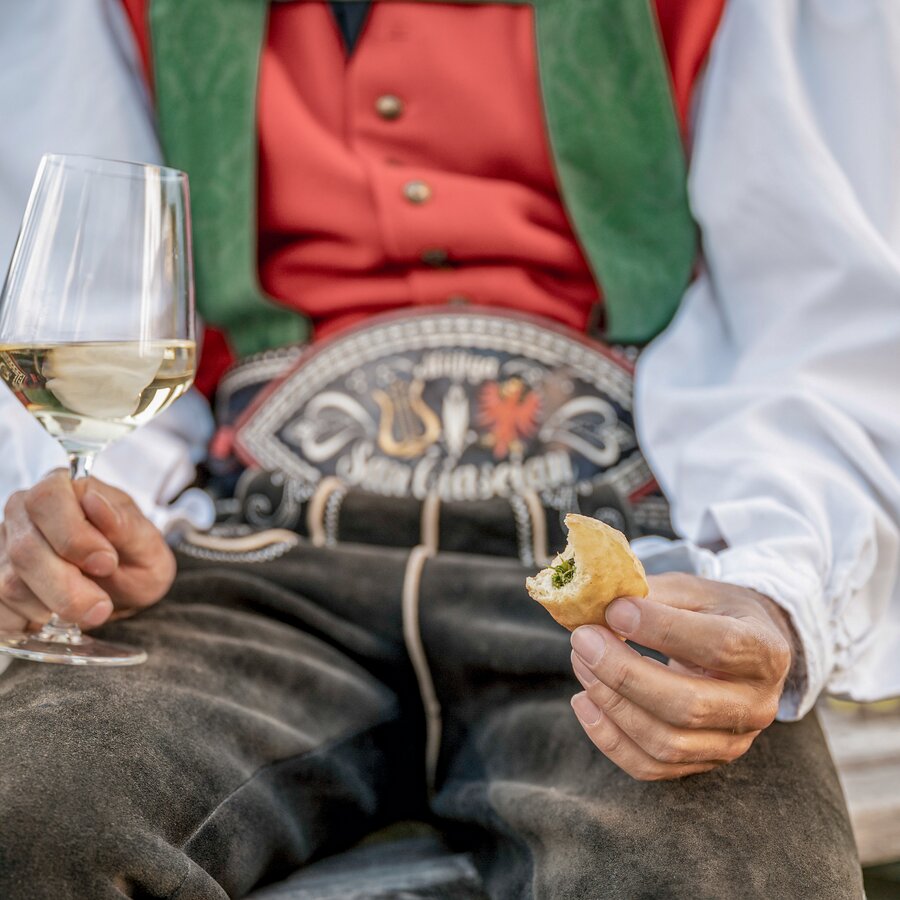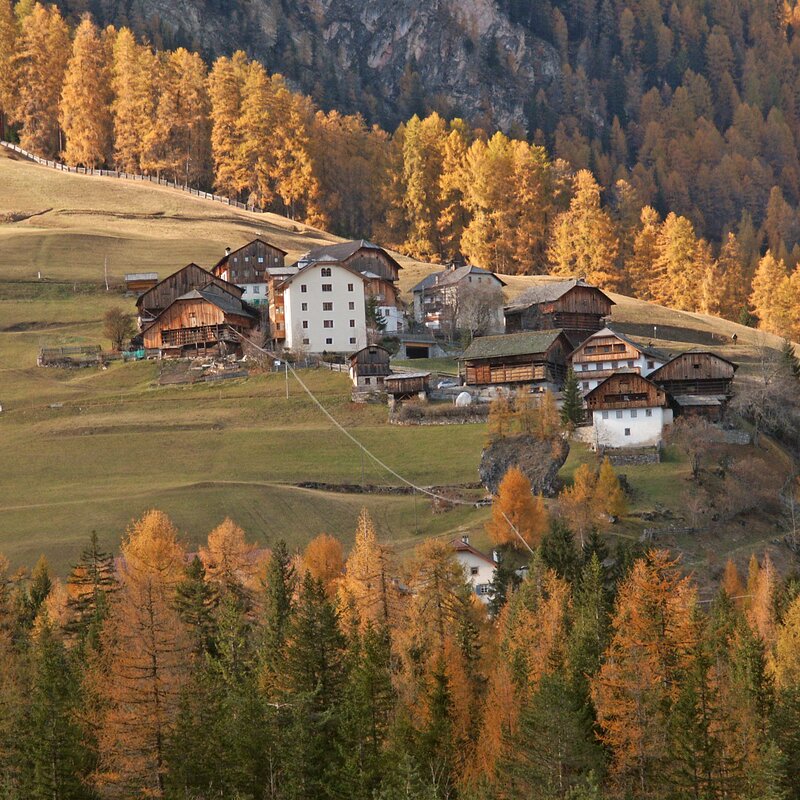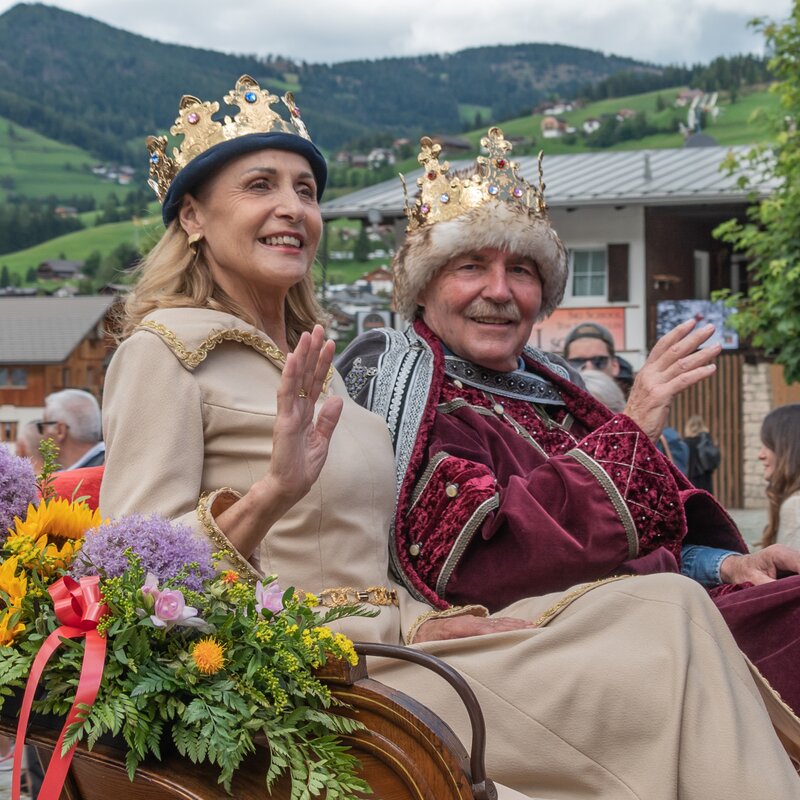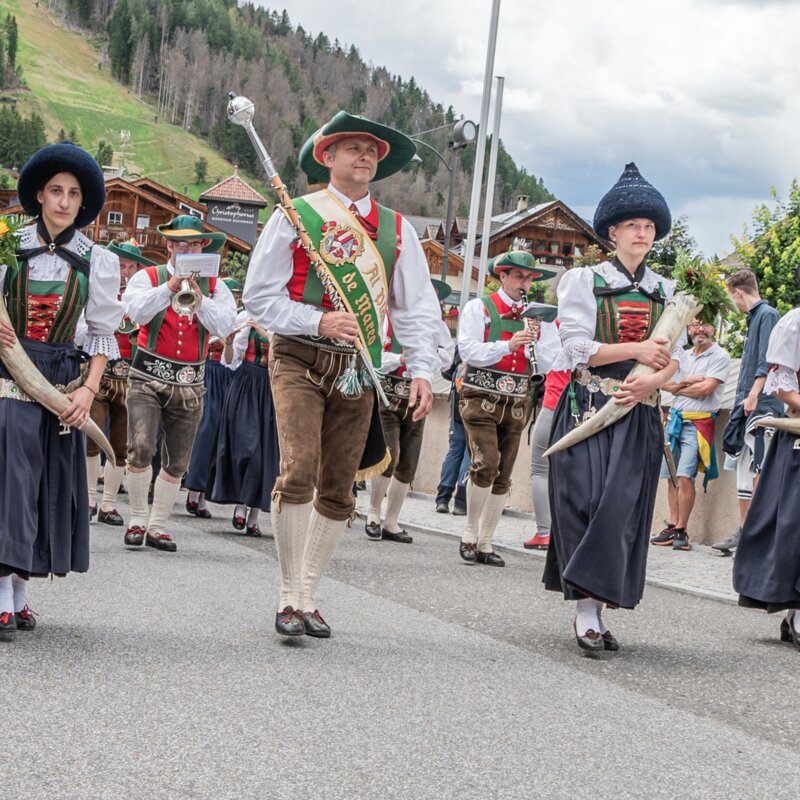Sustainability

Our destination is committed to preserving and enhancing the cultural and intangible heritage of San Vigilio and San Martino, which we value as highly as our natural environment. Museums and cultural attractions play a vital role in keeping Ladin history and culture alive, promoting its language, traditions, legends, gastronomy, music, art, and craftsmanship.
Our goal is to develop a form of tourism that respects, showcases, and enhances local traditions without compromising their unique characteristics. We invite you to discover the most authentic Ladin culture—best experienced and appreciated firsthand!

Ladin, a Romance language that evolved from Latin, is the most distinctive feature of the population in the Val Badia and the areas surrounding the Sella Massif compared to the rest of South Tyrol. In Val Badia, Ladin is the mother tongue of 97% of the population and is taught in schools through a model that promotes proficiency in Italian and German while preserving and fostering Ladin as a living language that shapes local identity.
The protection of the Ladin language, with its history spanning over a thousand years, is entrusted to various cultural institutions that help convey its value to visitors. The Ladin Cultural Institute Micurá de Rü in San Martino in Badia serves as a reference point for the valleys of Val Gardena, Val Badia, and Marebbe. It offers publications, scientific studies, and an extensive library. The Museum Ladin at Ciastel de Tor showcases the history of the Dolomite Ladins, highlighting the impact of historical events and the deep connection between their landscape and lifestyle.


Gastronomy is an integral part of our identity and the cultural heritage that defines the Ladin people. We are committed to preserving and promoting its authenticity. Our cuisine is predominantly rural, deeply connected to the land, the seasons, and local products. The dishes are worth discovering and enjoying in their various preparations, which can differ from village to village.
We invite visitors to savor typical Ladin dishes and immerse themselves in our authentic culture, characterized by robust and genuine flavors. In the San Vigilio Dolomites area, you’ll find a wide range of rustic establishments where Ladin cuisine is prepared as it once was. At the same time, some chefs offer modern reinterpretations that, in recent years, have presented tradition in a refined new form. This approach highlights the quality of simple yet essential ingredients that embody the spirit of this region.

As a cooperative, we aim to promote our traditions authentically by organizing cultural events, markets, and exhibitions, while also providing greater visibility to local artists. The Ladin artists' association EPL (Ert por i Ladins), which includes artists, musicians, and writers from Val Badia, along with the Ladin Cultural Institute Micurá de Rü in San Martino in Badia, enriches the artistic and cultural scene with exhibitions, performances, and presentations throughout the region.
The Museum Ladin Ciastel de Tor in San Martino in Badia offers a comprehensive overview of the history of the Dolomite Ladins. It focuses primarily on the Ladin language and traditions but also features exhibits on geology, archaeology, tourism, economic history, and the craftsmanship of the five Ladin valleys.

To discover true Ladin tradition, simply stroll among the old farms in the rural villages of Val Badia and admire the architecture of times past. It is our responsibility to preserve these rural gems, which hold the soul of entire generations. Our cooperative promotes Ladin architecture by recommending walks through the Viles and mills, encouraging a slow and mindful form of tourism that immerses visitors in rural life.
Near the center of Lungiarü, at the entrance to the Puez-Odle Nature Park, you’ll find eight water mills along a themed trail. Here, visitors can learn about the workings of an old mill and witness grain being ground. In 2018, Lungiarü was recognized as a "Mountaineering Village"—the first in the Dolomites. This international network promotes places of natural beauty and mountainous identity, far from mass tourism, in line with the Alpine Convention, which supports sustainable development, environmental protection, and the enhancement of local traditions and culture.

Until the late 19th century, the stories of the Ladin valleys were passed down exclusively through oral tradition. The written collection of Ladin legends is thanks to the German-speaking writer Karl Felix Wolff, who spent years gathering and piecing together fragments of these tales that were still remembered.
Today, the mystical connection between humans and nature remains alive in the Ladin valleys, and the poetry of these places can still be felt through the legends that preserve their allure.
The ancient Ladin legends, with their tales of magical beings and mysterious places, are an integral part of our region's cultural heritage. For this reason, we are dedicated to keeping them alive as symbols of our values and traditions.
The Tourism Cooperative has developed a themed trail, the "Tru dles Liondes" (Path of Legends), which brings the enchanting world of the Fanes legends to life in the forests of San Vigilio. This trail invites visitors to immerse themselves in a surreal dimension, helping to promote and preserve a unique and valuable cultural heritage that is deeply woven into the history and identity of our region.

The Ladin music scene is primarily composed of choirs and brass bands, which have played a crucial role over the past century and a half in preserving and promoting Ladin music and local identity.
The melodies of the brass bands from San Vigilio and San Martino blend the traditions of the Ladin people, who have lived in these valleys for over a thousand years, with influences from contemporary music genres.
San Vigilio Dolomites is rich in events and concerts that bring the villages of the valley to life, offering entertainment for both visitors and locals. Numerous events, from village festivals to traditional music festivals, are organized throughout the year to showcase our culture and the vibrant colors of our traditions.